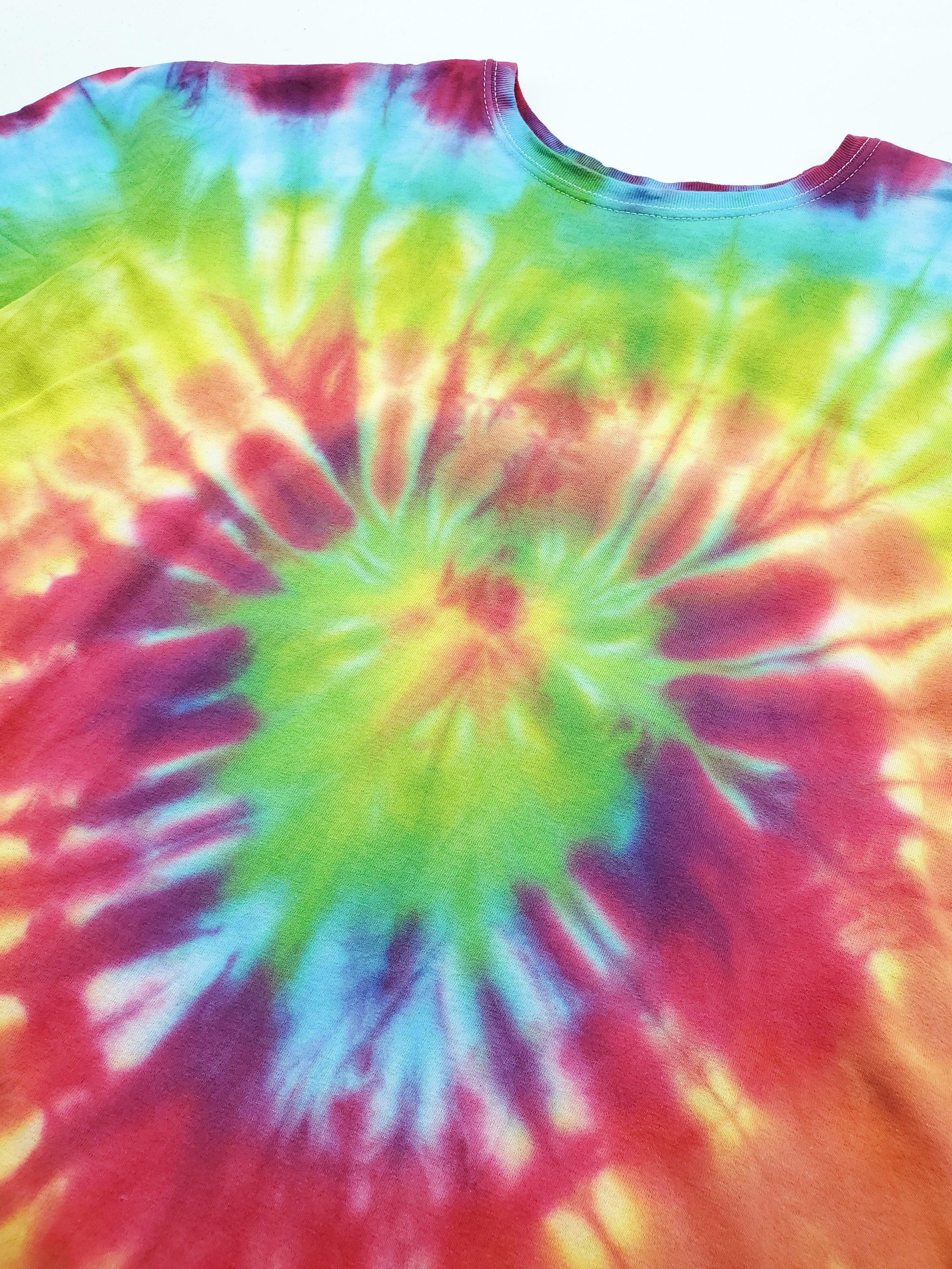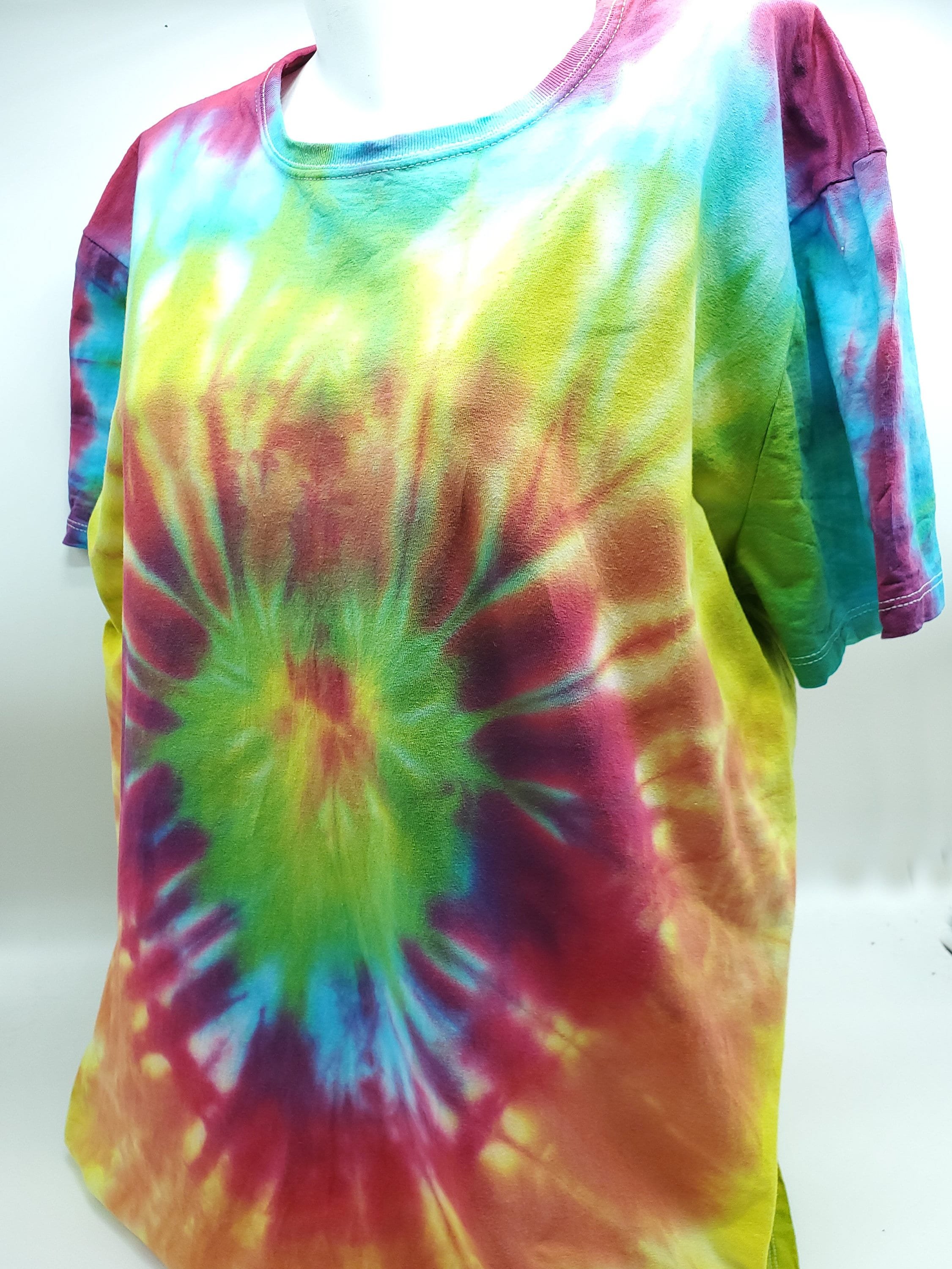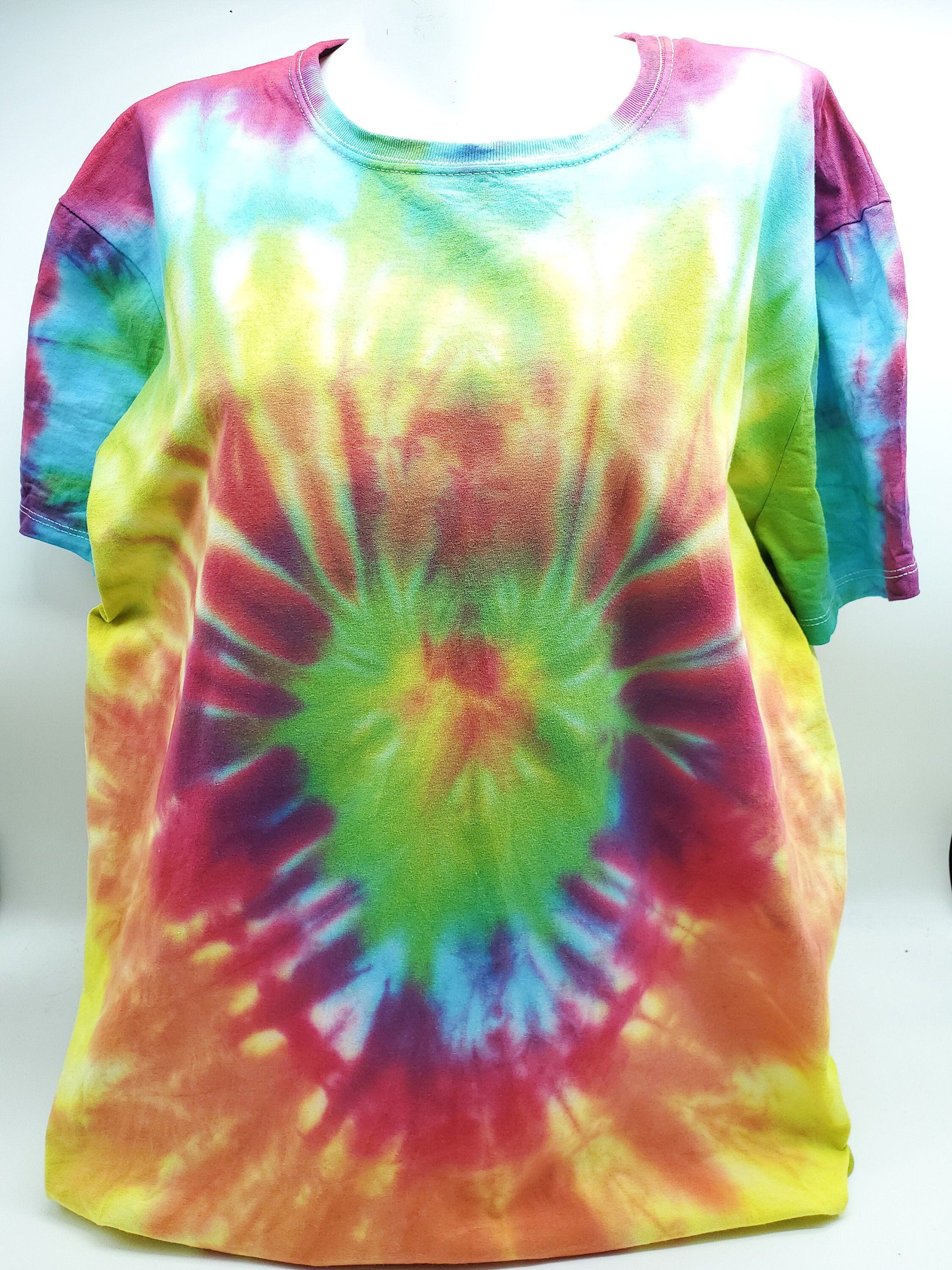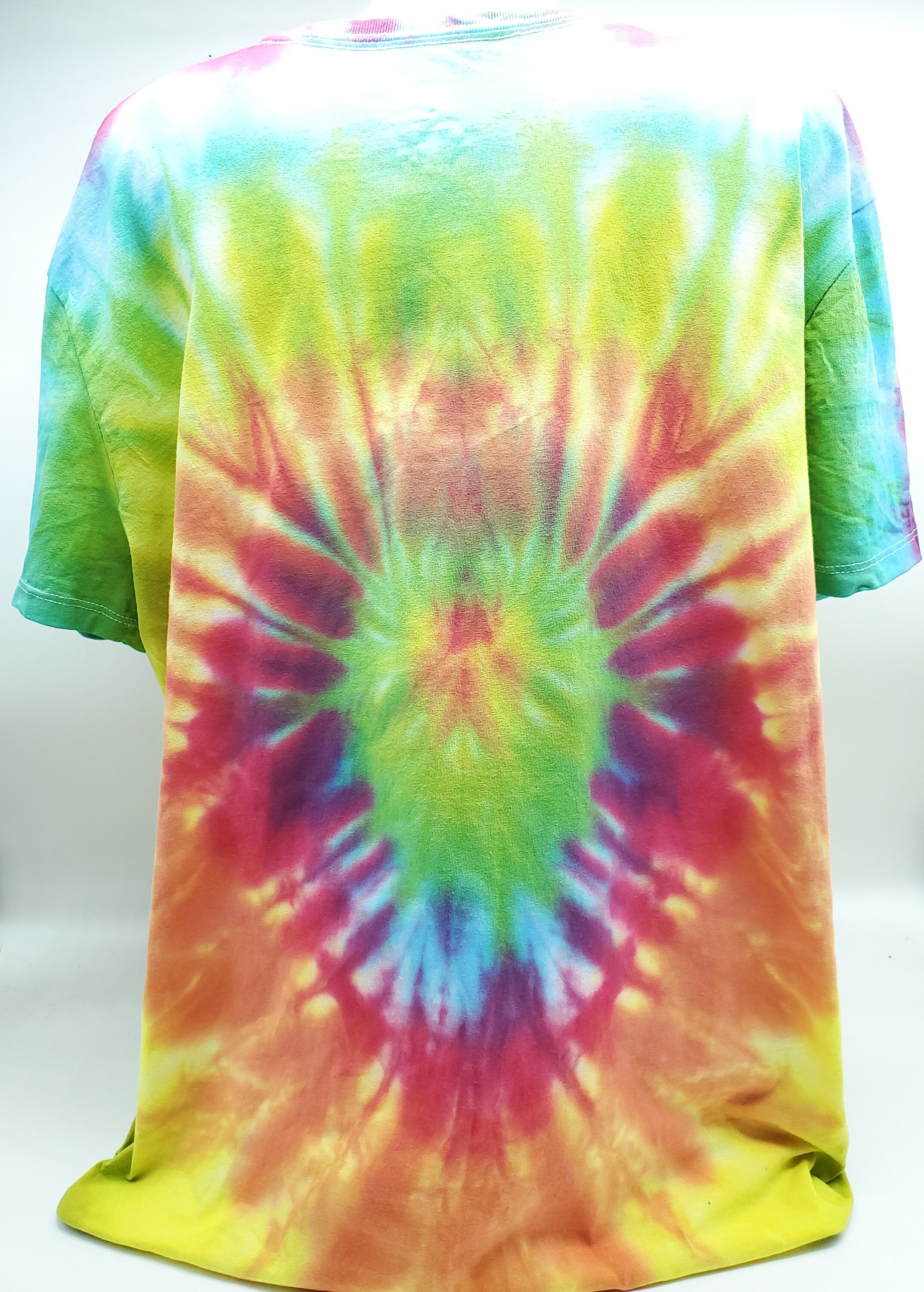 Image 1 of 4
Image 1 of 4

 Image 2 of 4
Image 2 of 4

 Image 3 of 4
Image 3 of 4

 Image 4 of 4
Image 4 of 4





2XL Skittles Tie Dye T- Shirt
You can almost taste the rainbow with this shirt inspired by the popular candy (which may or may not have been a staple around here for the past few weeks). Bright, cheerful, yummy.
***
Hand tied and dyed using procion dye
***
Originating in Japan, Shibori is an ancient art form of manual resist cloth dyeing that is still practiced in many countries in the Eastern world today. The word itself, comes from “shiboru” meaning to wring, press or squeeze. Resists are created by using a variety of folding techniques, by wrapping on objects such as a pole or rope, compressing between wooden blocks, tying, and specialized sewing stitches. No two shibori works are identical as any small difference in the process can dramatically change the outcome. Each piece of shibori is its own individual work of art. Kanoko or “Bound-Resist” Shibori uses string, sinew, thread, or even rubber bands to pinch, bind and shape the fabric. The fabric can be painstakingly folded, twisted and shaped in many different ways and then bound to create a resisted design. Shibori is a process. This piece has been washed, rinsed and made ready for the dye, the resists applied, dyed in the colour(s) you see here, rinsed, the resists removed and then washed, hung to dry and then ironed. Shibori is a very detailed process; each piece must be treated with love, dedication and respect and as a result, it becomes a work of art that cannot be duplicated.
***
The Japanese aesthetic of “wabi-sabi” embraces imperfection and transience through its preference of natural, asymmetrical and simple design. It is a logical companion to shibori, as the natural fibres, manual process, basic yet elegant designs and the unpredictability of the results are integral to the beauty of each work.
You can almost taste the rainbow with this shirt inspired by the popular candy (which may or may not have been a staple around here for the past few weeks). Bright, cheerful, yummy.
***
Hand tied and dyed using procion dye
***
Originating in Japan, Shibori is an ancient art form of manual resist cloth dyeing that is still practiced in many countries in the Eastern world today. The word itself, comes from “shiboru” meaning to wring, press or squeeze. Resists are created by using a variety of folding techniques, by wrapping on objects such as a pole or rope, compressing between wooden blocks, tying, and specialized sewing stitches. No two shibori works are identical as any small difference in the process can dramatically change the outcome. Each piece of shibori is its own individual work of art. Kanoko or “Bound-Resist” Shibori uses string, sinew, thread, or even rubber bands to pinch, bind and shape the fabric. The fabric can be painstakingly folded, twisted and shaped in many different ways and then bound to create a resisted design. Shibori is a process. This piece has been washed, rinsed and made ready for the dye, the resists applied, dyed in the colour(s) you see here, rinsed, the resists removed and then washed, hung to dry and then ironed. Shibori is a very detailed process; each piece must be treated with love, dedication and respect and as a result, it becomes a work of art that cannot be duplicated.
***
The Japanese aesthetic of “wabi-sabi” embraces imperfection and transience through its preference of natural, asymmetrical and simple design. It is a logical companion to shibori, as the natural fibres, manual process, basic yet elegant designs and the unpredictability of the results are integral to the beauty of each work.
You can almost taste the rainbow with this shirt inspired by the popular candy (which may or may not have been a staple around here for the past few weeks). Bright, cheerful, yummy.
***
Hand tied and dyed using procion dye
***
Originating in Japan, Shibori is an ancient art form of manual resist cloth dyeing that is still practiced in many countries in the Eastern world today. The word itself, comes from “shiboru” meaning to wring, press or squeeze. Resists are created by using a variety of folding techniques, by wrapping on objects such as a pole or rope, compressing between wooden blocks, tying, and specialized sewing stitches. No two shibori works are identical as any small difference in the process can dramatically change the outcome. Each piece of shibori is its own individual work of art. Kanoko or “Bound-Resist” Shibori uses string, sinew, thread, or even rubber bands to pinch, bind and shape the fabric. The fabric can be painstakingly folded, twisted and shaped in many different ways and then bound to create a resisted design. Shibori is a process. This piece has been washed, rinsed and made ready for the dye, the resists applied, dyed in the colour(s) you see here, rinsed, the resists removed and then washed, hung to dry and then ironed. Shibori is a very detailed process; each piece must be treated with love, dedication and respect and as a result, it becomes a work of art that cannot be duplicated.
***
The Japanese aesthetic of “wabi-sabi” embraces imperfection and transience through its preference of natural, asymmetrical and simple design. It is a logical companion to shibori, as the natural fibres, manual process, basic yet elegant designs and the unpredictability of the results are integral to the beauty of each work.
